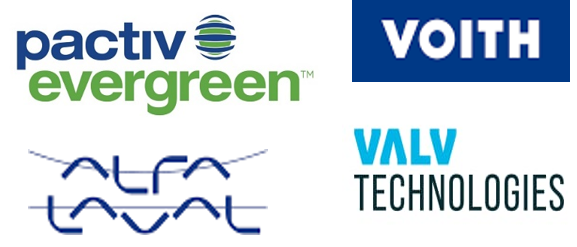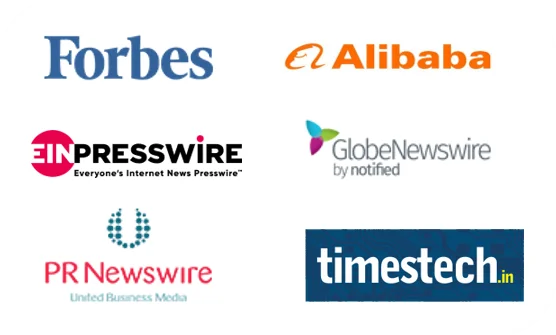Market Overview:
"The global magnetic resonance imaging (MRI) metal detector market was valued at US$ 631.6 Million in 2024 and is expected to register a CAGR of 8.5% over the forecast period and reach US$ 1,316.2 Million in 2033."
|
Report Attributes |
Details |
|
Base Year |
2024 |
|
Forecast Years |
2025-2033 |
|
Historical Years |
2021-2024 |
|
Magnetic Resonance Imaging (MRI) Metal Detector Market Growth Rate (2025-2033) |
8.5% |
Magnetic Resonance Imaging (MRI) metal detector is a specialized device designed to detect metallic objects within a patient's body during an MRI scan.
MRI is a non-invasive imaging technology that produces three-dimensional, detailed anatomical images. This technology is primarily used in hospitals, diagnostic centers, and other medical facilities for scanning and various other purposes.
Revenue from the global MRI metal detector market is increasing significantly due to rising adoption of MRI scans in healthcare sectors. Advancements in technology, such as improved detection accuracy and reduced false alarms, are contributing to adoption of more advanced equipment in the market. Initiatives promoting regulatory compliance and the development of advanced services and solutions are further supporting market growth.
Magnetic Resonance Imaging (MRI) Metal Detector Market Trends and Drivers:
Increasing Adoption of MRI Scans: Increasing utilization of MRI scans in the healthcare industry is a major growth driving factor. Use and need is driven by increasing number of surgeries and medical interventions involving metal implants.
Technological Advancements: Continuous advancements in MRI metal detector technology, such as improved detection accuracy and reduced false alarms, are enhancing the overall performance and reliability of these devices.
Regulatory Compliance: Regulatory bodies and healthcare organizations worldwide are emphasizing the importance of adhering to safety guidelines and ensuring patient welfare during MRI scans. Compliance with these regulations asserts safety and credibility of equipment and supports for MRI metal detectors market demand.
Increasing Focus on Patient Safety: Patient safety is a paramount concern in healthcare settings, and the use of MRI metal detectors addresses this concern effectively. These devices minimize the risks associated with metal implants, objects, or fragments, leading to better patient outcomes and improved overall safety.
Magnetic Resonance Imaging (MRI) Metal Detector Market Restraining Factors:
High Cost: MRI Metal Detectors can be expensive to procure and maintain, which poses a financial challenge for healthcare facilities. The high cost of these devices can deter potential buyers, especially in resource-constrained settings.
Limited Awareness and Education: Lack of awareness and limited knowledge about the benefits and importance of MRI metal detectors can restrain market revenue growth. Healthcare professionals and patients may not fully understand the risks associated with metallic objects during MRI scans, leading to underutilization of these devices.
Integration Challenges: Integrating MRI metal detectors into existing MRI systems or workflows can present technical challenges. Compatibility issues and the need for additional training or modifications may pose obstacles to the seamless implementation of these devices, and thus have a negative impact on revenue growth of the market.
Potential False Alarms: MRI metal detectors can occasionally generate false alarms, leading to unnecessary interruptions or delays in patient care. These false alarms can erode trust in the technology and create hesitancy among healthcare professionals, thereby affecting product adoption.
Alternatives and Substitutes: In certain cases, alternative imaging techniques or screening methods may be considered instead of using MRI metal detectors. For example, pre-screening patients for metallic objects before an MRI scan may be preferred over relying solely on metal detectors. The availability of such alternatives can limit the demand for MRI metal detectors and restrain market growth.
Magnetic Resonance Imaging (MRI) Metal Detector Market Opportunities:
Increasing Demand for MRI Scans: Growing adoption of MRI scans in medical practice creates significant opportunities for MRI metal detector manufacturers. As the number of MRI procedures increases, there is a corresponding need for reliable metal detection devices to ensure patient safety, thus presenting a lucrative revenue stream.
Technological Advancements: Continual advancements in MRI metal detector technology offer opportunities for innovation and product differentiation. Companies can invest in research and development to improve detection accuracy, reduce false alarms, enhance user experience, and introduce cutting-edge features, attracting customers and generating revenue.
Expansion of Healthcare Facilities: The expansion of healthcare infrastructure, particularly in emerging economies, presents substantial opportunity. As new hospitals, diagnostic centers, and imaging facilities are established, there is a need to equip these facilities with MRI metal detectors, providing companies with a potential revenue stream.
Service and Maintenance Contracts: Offering comprehensive service and maintenance contracts for MRI metal detectors can be a lucrative revenue stream. Companies can provide installation, calibration, training, regular maintenance, and repairs, ensuring the optimal performance and longevity of the devices while generating recurring revenue from service agreements.
Strategic Partnerships and Distribution Networks: Collaborating with strategic partners, such as healthcare equipment distributors or Original Equipment Manufacturers (OEMs), can help companies expand their market reach and increase sales. Establishing strong distribution networks and partnerships allows for wider market penetration, ultimately driving revenue growth.
Magnetic Resonance Imaging (MRI) Metal Detector Market Segmentation:
By Product Type:
- Handheld Metal Detectors
- Doorway Metal Detectors
- Whole-body Metal Detectors
By End-User:
- Hospitals
- Diagnostic Centers
- Ambulatory Surgical Centers
- Research Institutes
By Technology:
- Electromagnetic Detection
- Ferromagnetic Detection
- Magnetic Field Variation Detection
By Application:
- Orthopedic Implants
- Cardiac Devices
- Dental Implants
- Neurological Implants
- Others
By Magnetic Field Strength:
- Low-field MRI Metal Detectors
- Mid-field MRI Metal Detectors
- High-field MRI Metal Detectors
By Mode of Operation:
- Continuous Wave (CW) Detection
- Pulse Induction (PI) Detection
- Beat Frequency Oscillation (BFO) Detection
By Sales Channel:
- Direct Sales
- Distributor Sales
By End-User Age Group:
- Adult MRI Metal Detectors
- Pediatric MRI Metal Detectors
By Magnetic Field Strength Compatibility:
- MRI Metal Detectors for 1.5 Tesla Scanners
- MRI Metal Detectors for 3 Tesla Scanners
- MRI Metal Detectors for 7 Tesla Scanners
By Product Mobility:
- Portable MRI Metal Detectors
- Fixed MRI Metal Detectors
Magnetic Resonance Imaging (MRI) Metal Detector Market, By Region:
North America:
- United States
- Canada
Europe:
- Germany
- United Kingdom
- France
- Italy
- Spain
- Rest of Europe
Asia Pacific:
- China
- Japan
- India
- South Korea
- Rest of Asia Pacific
Latin America:
- Brazil
- Mexico
- Argentina
Middle East & Africa:
- Saudi Arabia
- South Africa
- United Arab Emirates
- Israel
North America market share incline is driven by a significant extent by robust revenue share contribution from countries such as the United States and Canada. Presence of advanced healthcare infrastructure, need for stringent regulatory compliance, robust focus on patient safety, coupled with increasing adoption of MRI scanning systems and government initiatives supporting research and development are some key factors expected to continue to support revenue growth of the North America market.
Countries in Europe, such as Germany, the United Kingdom, and France, exhibit substantial demand for MRI metal detectors. Presence of a well-established healthcare system, high patient safety standards, and technological advancements, along with increasing investments in healthcare infrastructure, rising prevalence of metal implants, and favorable government initiatives promoting advanced medical devices are some key factors supporting revenue growth of the Europe market.
Countries such as like China, Japan, and India in account for majority of revenue contribution and demand for MRI metal detectors in the Asia Pacific market. Expanding healthcare sector, rising disposable income, and increasing awareness about advanced medical technologies are some key factors contributing to market revenue growth. Government initiatives promoting healthcare modernization, along with industry collaborations are other factors supporting revenue growth.
Latin American countries, including Brazil and Mexico, are witnessing rising demand for MRI metal detectors. The region's improving healthcare infrastructure, expanding medical tourism trend, and increasing awareness about patient safety are key factors driving market revenue growth. Government initiatives focusing on healthcare development and technological advancements are other factors having positive impact on the market.
Leading Companies in Magnetic Resonance Imaging (MRI) Metal Market & Competitive Landscape:
The competitive landscape in the global MRI metal detector market is characterized by the presence of several key players. Companies such as Metrasens, Mednovus, Medtronic, and Infab Corporation are actively involved in product development, strategic collaborations, and mergers and acquisitions to gain a competitive edge. Continuous technological advancements and a focus on delivering reliable and accurate metal detection solutions drive competition in the market.
Company List:
- Metrasens
- Mednovus
- Medtronic
- Infab Corporation
- Metronom Health
- CIVCO Medical Solutions
- EZEM AG
- Toshiba Medical Systems Corporation
- Berchtold Corporation
- STERIS Corporation
- Royal Philips
- GE Healthcare
- Siemens Healthineers
- Hitachi Medical Systems
- Hologic, Inc.
Research Scope
|
Report Metric |
Report Details |
|
Magnetic Resonance Imaging (MRI) Metal Market Size available for the years |
2021-2033 |
|
Base Year |
2024 |
|
Forecast Period |
2025-2033 |
|
Compound Annual Growth Rate (CAGR) |
8.5% |
|
Segment covered |
By Product Type, End-User, Technology, Application, Magnetic Field Strength, Mode of Operation, Sales Channel, End-User Age Group, Magnetic Field Strength Compatibility, Product Mobility,, and Region |
|
Regions Covered |
North America: The U.S. & Canada Latin America: Brazil, Mexico, Argentina, & Rest of Latin America Asia Pacific: China, India, Japan, Australia & New Zealand, ASEAN, & Rest of Asia Pacific Europe: Germany, The U.K., France, Spain, Italy, Russia, Poland, BENELUX, NORDIC, & Rest of Europe The Middle East & Africa: Saudi Arabia, United Arab Emirates, South Africa, Egypt, Israel, and Rest of MEA |
|
Fastest Growing Country in Europe |
Germany |
|
Largest Market |
North America |
|
Key Players |
Metrasens, Mednovus, Medtronic, Infab Corporation, Metronom Health, CIVCO Medical Solutions, EZEM AG, Toshiba Medical Systems Corporation, Berchtold Corporation, STERIS Corporation, Royal Philips, GE Healthcare, Siemens Healthineers, Hitachi Medical Systems, Hologic, Inc, and among others. |
Frequently Asked Question
What are some key factors driving revenue growth of the global MRI metal detector market?
Some key factors driving market growth include increasing adoption of MRI scans, rising prevalence of metal implants, technological advancements in detection accuracy, regulatory compliance emphasizing patient safety, and expansion of healthcare infrastructure globally.
Which end-users are driving the demand for MRI metal detectors?
The demand for MRI metal detectors is primarily driven by hospitals, diagnostic centers, ambulatory surgical centers, and research institutes that perform MRI scans to ensure patient safety and detect metallic objects or implants.
What are the major technological advancements in MRI metal detectors?
Technological advancements include improved detection accuracy, reduced false alarms, and enhanced user experience. Other advancements involve compatibility with different magnetic field strengths, such as low-field, mid-field, and high-field MRI scanners.
How are the competitive landscape and market share in the global MRI metal detector market?
The market is characterized by several major players, such as Metrasens, Mednovus, Medtronic, and Infab Corporation. These companies engage in product development, strategic collaborations, and mergers and acquisitions to gain a competitive edge and capture market share.
How are government initiatives supporting revenue growth of the global MRI metal detector market?
Government initiatives play a vital role in supporting revenue growth. These initiatives focus on healthcare modernization, patient safety regulations, research and development funding, and technological advancements in medical devices, including MRI metal detectors.

